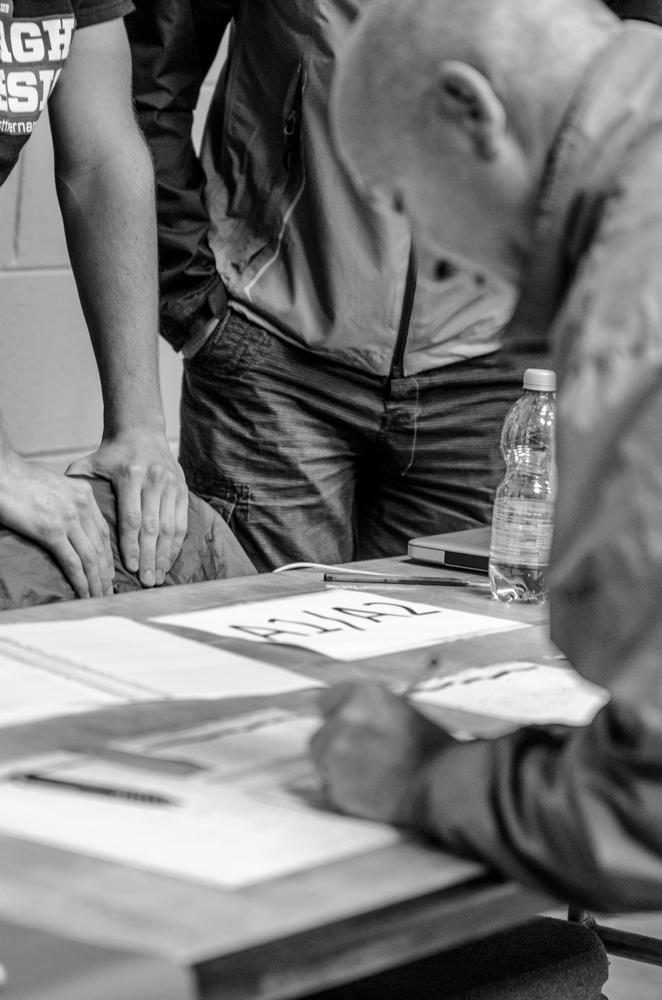Setting racing goals for 2016
New racing manager John Malone believes targets are the greatest motivator, and that it is never too soon to get motivated. Here he introduces the beginning of a series that will put you on that track: the fast track to success.
THE 2015 season may barely be behind us, but now is the time to start thinking about your competitive goals for 2016.
Whatever your level, you can get more out your racing if you pick a few events to peak for. By putting some structure into your season and your training, you can aim to build your fitness specifically towards your target event, giving yourself the best chance of being in the best shape at exactly the right time. You should also be able to hold that form for a few weeks after your peak event.
Nailing down that target this far out can also really help with motivation. I find December particularly challenging for keeping to a training plan, but if you set some goals now, and know what you’re aiming for and when that is, you’ll find it easier to put down that beer and get decent miles in during the party season.
Over the next two weeks I’ll be publishing pretty much everything I know about bike racing in Ireland to help you choose that goal, and after Christmas we’ll get into how to train for that goal.
Right now, here’s the basic need-to-knows for becoming a bike racer – and for improving as a bike racer.
Getting started
First you’ll need to decide what level you want to race at and obtain the appropriate Cycling Ireland licence.
There are various classes of licence available and it can be a bit confusing knowing which one to get.
If you are only interested in doing the InterClub League, then you only need a Limited Competition Licence. This will entitle you to race in the InterClub League, but not in open races.
If you want to race in open races, stage races and most time trial events you’ll need a Full Competition Licence, something you can always upgrade to later in the season.
You’ll receive a Cycling Ireland membership card with both of these licence types, and with a full competition licence you’ll also receive race numbers. You use the same numbers all season, so keep them safe.
In every open race, tour race numbers must be displayed on the back of your jersey, one on each side of you back, over the pockets of your jersey – and secured with safety pins.
You don’t get race numbers with a Club Competition licence and numbers aren’t needed for InterClub League racing.
For more details on Cycling Ireland licence types, see the licence section of their website: http://www.cyclingireland.ie/page/membership/types-of-membership.
Choosing races
If you’re new to racing, get some experience in different sorts of races early on to find out what suits you best.
 Do the InterClub League, do some hilly races, do some flat races and see which ones you like most. Once you have an idea of what you’re better at, you can focus on a particular race later in the season.
Do the InterClub League, do some hilly races, do some flat races and see which ones you like most. Once you have an idea of what you’re better at, you can focus on a particular race later in the season.
If you’re not new to racing, then the world is your oyster. Hopefully you’ve already tried lots of different types of races and can now zoom in on your strengths.
If you know you’re a good climber, look for a hilly course. If you know you’re a powerful sprinter, look for a flat course. If you know you’re a machine against the clock, find a time trial. If endurance is your game, then a stage race might be your big goal.
Don’t forget safety
Early season races have always been busier than races from June onwards. More numbers does mean increased risk, but don’t let that put you off early season races completely.
Some courses are safer than others, such as a course with climb in it. The climb will thin out the numbers, with weaker riders getting dropped and the bunch thinning out.
If you’re still in contention in the last few kilometres of these early season races, and you’re not a sprinter, leave the sprinters to it and drop off. The last few kilometres the most likely location for any spills to take place, so if you’re unlikely to get up for a place, drop back once in the last kilometre and you might avoid a nasty crash.
Top tip? Go North
It’s worth mentioning that racing in Northern Ireland is slightly different to racing down south.
Fields are limited to either 60 or 80 riders and require pre-entry as they fill up quickly. The smaller fields mean it’s easier to move around the bunch and get involved in the race.
Smaller races are also safer races, so if you’re prepared to do some prep work and enter early you can get some great racing. With the motorway network we enjoy, a lot of racing up North is really no farther away than most Leinster races.
In the next instalment, John will run through the races he personally recommends as potential targets. These are races that actually much of the club keeps going back to, with good organisation, good courses, and good racing.


Got something to say?